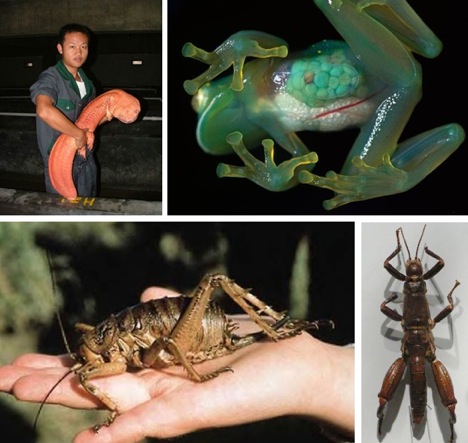
The bladder-chewing guppy not enough for you? Can’t stop thinking about exploding ants, boyfriend-devouring she-monsters of the sea and blood-spurting lizards? Don’t worry – terrifying oneself is a common ailment of the intertubes. Unfortunately, there is no cure…but there is more to learn! Reader, prepare thyself. Your eyeballs are about to be flooded with some of the strangest, creepiest, crawliest endangered creatures on the planet. Warning: content best consumed as far away from bedtime as possible – and no, these are not extinct animals, either.
Mexican Walking Fish
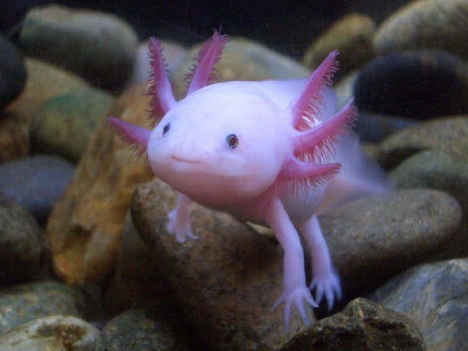
(Image via dillheady)
The Mexican walking fish is on the verge of extinction. It’s a caecilian (more about that in a bit), and it lives in – where else? – the waters off Mexico. It’s also important because it will be the only cute animal in this entire post. Awww. It really is cute, isn’t it? It’s always nice to start things off gently. Digital foreplay, if you will.
Goliath Bird Eating Spider
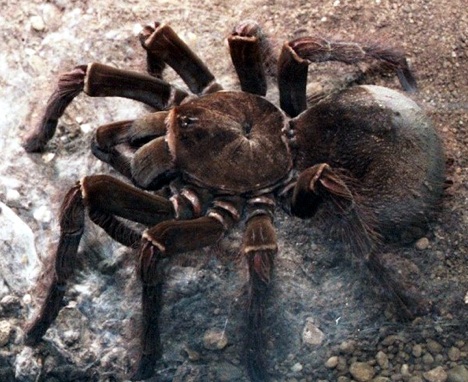
(Image via cirrusimage)
Only the biggest spider on earth, this plate-sized bird-gnawing beast actually prefers to feast on smaller fare, like bats, bugs, and annoying children. In other words, the bird-eating spider rarely eats birds. Sure. Anyway, like its tarantula cousin below (the whistling spider) the Goliath or bird-eating spider is at risk due to its Amazonian habitat destruction. Though tarantulas are scary, they’re fairly harmless to humans.
Whistling Spider
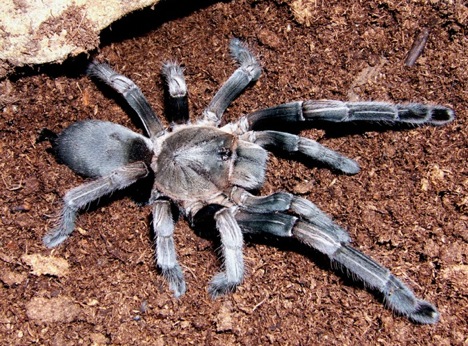
(Image via arachnoboards)
Here, human human human human. Good human! The whistling spider is able to emit a distinctive whistle by rubbing its legs together. What, you thought spiders had lips? How else would they whistle! It’s a vital part of its native ecosystem and while it is not critically endangered, habitat destruction puts this important species at risk.
Chinese Giant Salamander
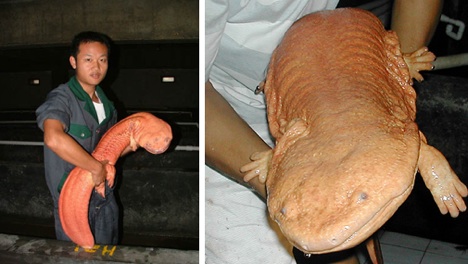
(Images via xinhuanet and ZSL)
Something tells us these giant salamanders were never called for in any witch’s recipe. Seriously, look at that thing! That lives under some people’s porches! The United States is also home to a giant salamander called the Hellbender, and it’s…well, the name fits. However, it is not as endangered as the shockingly strange-looking Chinese cousin. The Chinese giant salamander can grow to be nearly six feet long.
Lord Howe Island Stick Insect
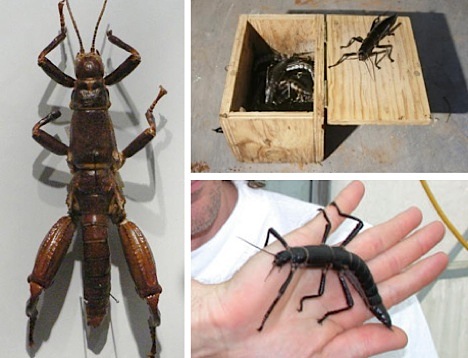
(Images via cane toad warrior, aqob and the Age)
Delightfully crisp! Kidding, kidding. There are hundreds of stick insects, but the Lord Howe Island stick insect is by far the most critically endangered of all of them. It can grow to five inches in length; but don’t worry, it’s not poisonous. Just crunchy.
Weta
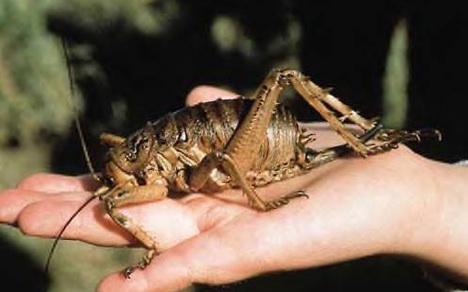
(Image via basenotes)
Think of this cheery critter as you would a common mouse: not terribly enjoyable to have underfoot, but vital to the ecosystem all the same. The weta is native to New Zealand and while it’s something of an icon thanks to Peter Jackson, non-native species, pest eradication and general ugliness (which really can’t be helped now, can it?) have all contributed to the sad plight of the weta. There are actually over 70 species of weta, with 16 being endangered or at risk. The giant weta was thought to be extinct, but a new population was recently found. They aren’t the cutest bugs around, but they are harmless and besides, they put up with your mug, don’t they?
Giant Water Bug
The inspiration for Alien? The palm-sized giant water bug possesses a syringe-like tooth that bores into its prey, injects a toxic venom that liquefies the animal’s insides, and then…meat’s back on the menu! One of the favorite treats of Giant Water Bugs that live in the Amazon is the piranha. If that tells you anything. Why would we want something so bad ass to go extinct? It’s not like other animals are waiting around to eat piranhas.
Frigate Island Beetle
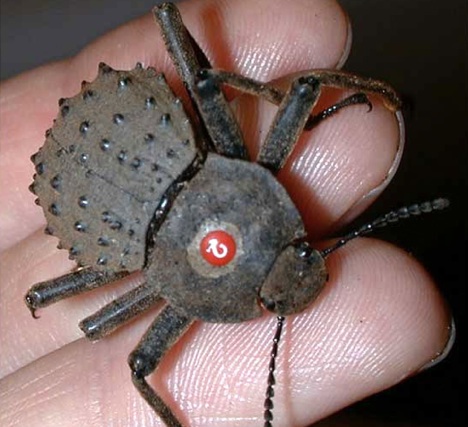
(Image via Endangered Ugly)
Put anything in a place where it’s hot and wet 99% of the time, and it will grow. Whether it’s a fern, a vine or a dear-Jeebus-that’s-horrifying beetle, things just come bigger in the tropics. The seriously endangered and geographically unique Frigate Island Beetle is no exception. It’s the largest of the tenebrionid beetles and the most at risk. If you ever leave the internet long enough to visit Frigate Island and you pick up a beetle and it stains your hands and clothes with a “musky” scented purple ink, put that little guy somewhere safe! You’ve just happened upon a Frigate Island beetle.
Giant Palouse Earthworm
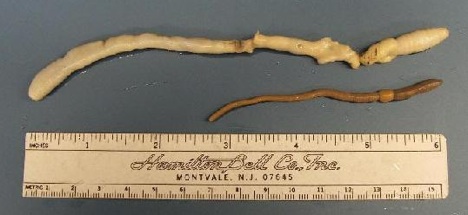
(Image via ecoscraps)
At lengths of up to one foot, the Giant Palouse is the largest earthworm on earth. It’s quite harmless, but unfortunately it’s endangered all the same. It lives in Eastern Washington State and Idaho and was thought to be extinct until 2005, when a student discovered a living specimen. Previous sightings hadn’t happened since the 1980s. Part of the reason it’s so hard to find the Giant Palouse? They burrow 15 feet into the ground.
Giant Coconut Crab
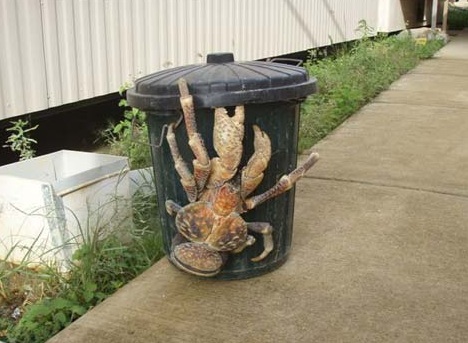
(Image via kottke)
This is not shopped. This is not a hoax. That is a giant crab on a garbage can. They’re native to Guam and other Pacific islands. Coconut crabs aren’t endangered, per se, but due to tropical habitat destruction they are at risk. In WWII, American soldiers stationed in the Pacific theater wrote home with tales about entire atolls being covered in the armor-plated giants. These crabs can crack a coconut in one swipe; but they’re generally too slow to be very dangerous to humans. Children pass lazy afternoons by picking the crabs off tree trunks and watching them crash to the ground; it’s reportedly great fun. And kind of messed up.
Crinoid Snapping Shrimp
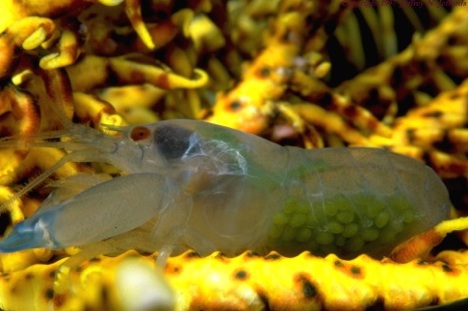
(Image via divegallery)
The tiny Crinoid snapping shrimp is the tiniest of all the snapping shrimp, and the only one that is endangered. The snapping shrimp is often called the pistol shrimp because it comes with its very own “gun” by which it makes a loud cracking, shooting noise. It really only shoots air, but the stun gun is enough to knock out prey foolish enough to swim past.
Honduran Ghost Bat
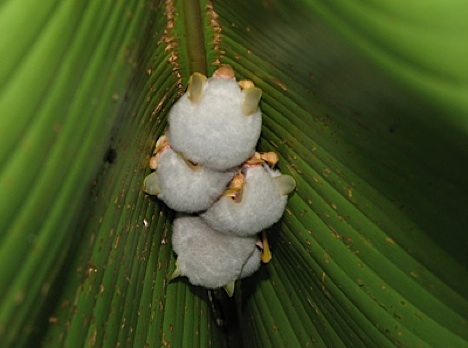
(Image via wonderful world of animals)
The Honduran ghost bat is not officially endangered, but many American ecologists consider it to be threatened due to rainforest habitat destruction and climate change. It is unique, both for its tiny size (just a few centimeters) and its pale coloring.
Mallorcan Midwife Toad
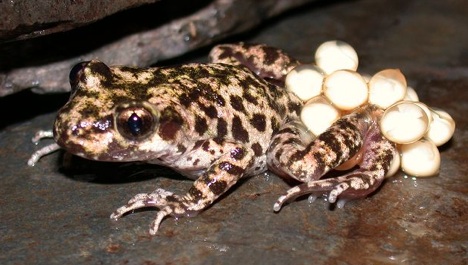
(Image via arkive)
The Mallorcan Midwife toad…is a dude. In a gender-bender twist that seems to occur a lot in the frog world, this toad swaps child-bearing and child-rearing duties. The father serves as a surrogate for the tots until they hatch, and even cares for them after. Mom, meanwhile, hunts and generally stays out partying every night. Females will even compete with each other for mating rights, much like males of other animal species.
Quacking Frog
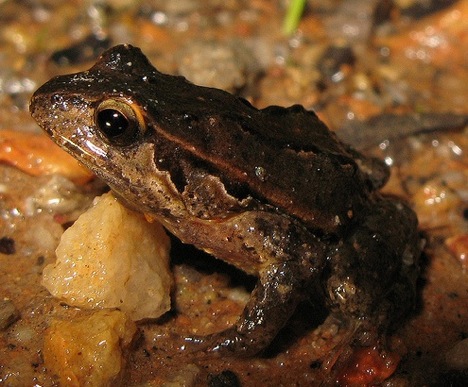
(Image via liquidghoul)
The quacking frog makes a sound that is just like a small duck. Go on, listen! Unfortunately, like many frogs, the quacking frog is endangered. Scientist are particularly concerned when frogs disappear or show signs of stress, because frogs are considered indicator species.
Glass Frog
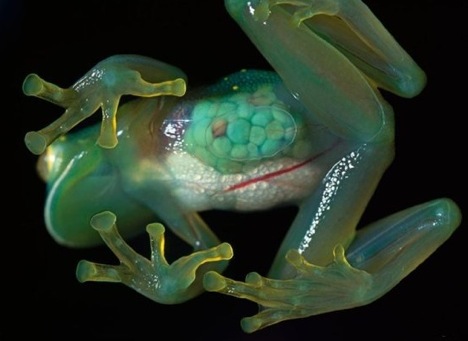
(Image via about:blank)
The glass frog is endangered, as well. And absolutely stunning, so it would be a shame if we let it die out. Note the visible organs in this beautiful specimen. Unfortunately, with tropical rainforests in Central and South America threatened (in some places, the problem is actually worse than it was in previous decades), the glass frog may go extinct.
More Legless Amphibians: the Icthyophis Kohtaoensis
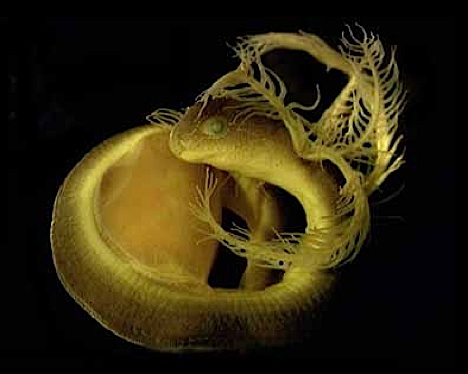
(Image via Berkeley)
There are actually a number of legless amphibians, but some of the strangest ones have tentacles sprouting from their heads. They’re known as caecilians, and some of them have some really unusual physical adaptations for a number of functions (the Mexican Walking Fish at the top of this post is just one). One caecilian has a protruding tail-like limb that enables external fertilization, for example. Though they look like soft worms, they have rows of very sharp teeth. There are over 120 species of caecilians around the world that have been discovered so far, but many of them are endangered and we don’t know much about them.
Komodo Dragon
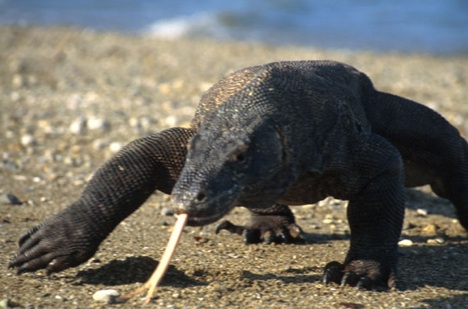
(Image source)
Threatened by both volcanoes and humans, this fascinating prehistoric relic is endangered. At 10 feet and 330 pounds, it is the largest lizard in existence. They have poor hearing and cannot run very fast for very long, instead relying on their sharp eyesight and powers of stealth to hunt. It possesses serrated teeth and has nasty attack habits, preferring to jab at the feet or drag its prey along for a bit before finishing off the deed. If an animal is lucky enough to get away, it will soon die from massive infection thanks to the komodo’s specialized bacteria. Komodos will eat nearly anything, living or dead, including their own young. Unlike the great cats, they will also eat nearly all of their kill, even the intestines, although they do swing those around to expel the feces first as they really don’t like excrement. For this reason, baby komodos roll themselves in feces to avoid being eaten.
Kagu
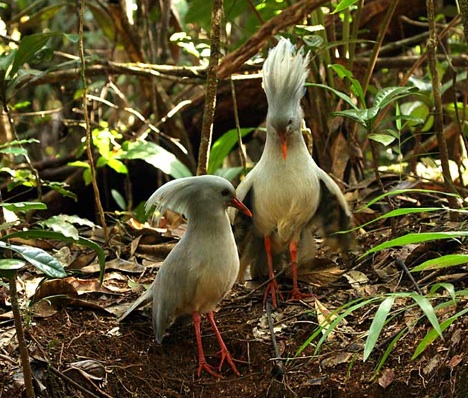
(Image via tropical birding)
A rare New Zealand bird, not much is known about the enigmatic Kagu. It is flightless, though its wings are large; it is a forest-dweller, though its markings are oddly light in color. Very few remain and scientists know little about its preferences and habits. We do know that it possesses “nasal corns” unlike any other bird. For reasons unknown, the kagu also has one-third the red blood count of other birds. Scientists have had a difficult time classifying this rare and unusual bird.
Hairy Nosed Wombat
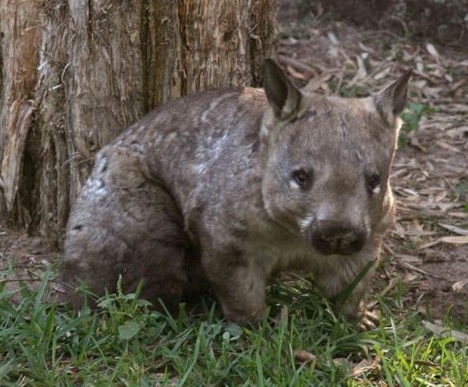
(Image currumbim)
Though it looks similar to the standard wombat, the hairy nosed wombat possesses some unique features. Among the rarest mammals in the world, it has a backwards-opening pouch and is the largest burrowing herbivorous mammal known to humans. The other oddity of the hairy nosed wombat is that its teeth continue to grow throughout its life – now that’s long in the tooth!
Striped Rabbit
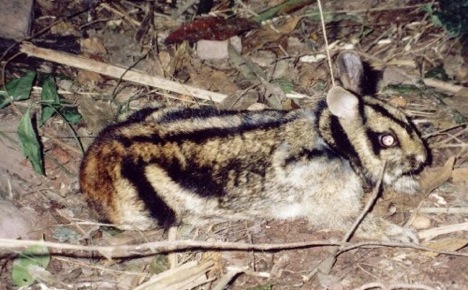
(Image via University of Alberta)
Only discovered within the last decade, the striped rabbit is considered a bit of a scientific novelty owing to its unusual markings. It comes from a region of Burma that has revealed many unusual species previously unknown to scientists, including a miniature deer. Pictures are scarce.





